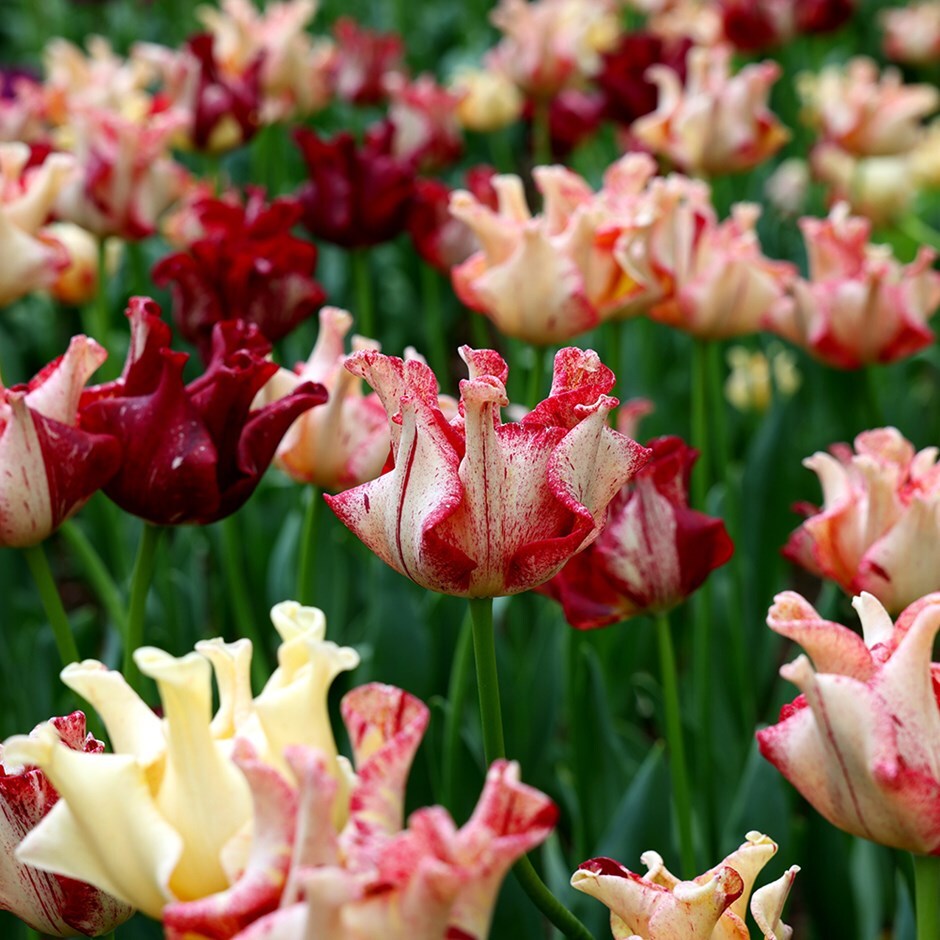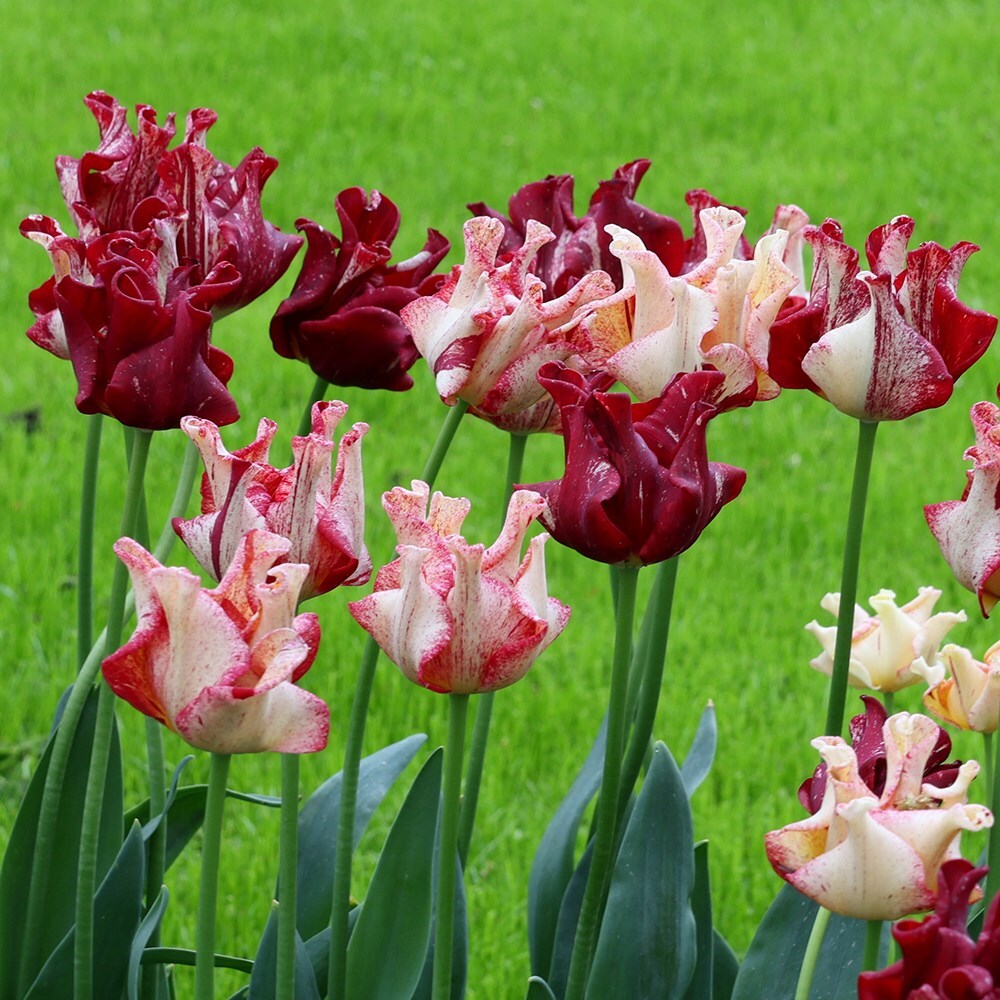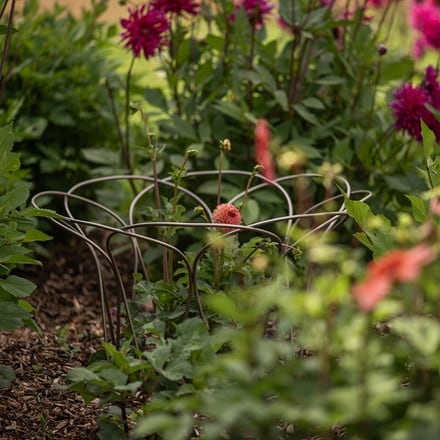Tulipa 'Striped Crown'
coronet tulip
- 7 × bulbs
- £7.99 £1.14 each
- In stock (shipped within 3-5 working days)
- 21 × bulbs
- £22.00 £1.05 each
- In stock (shipped within 3-5 working days)
Delivery options
- Bulbs (only) £4.99
- Position: full sun
- Soil: moderately fertile, moist but well-drained soil, or general purpose compost for containers
- Rate of growth: fast
- Flowering period: April to May
- Hardiness: fully hardy
- Bulb size: 11/12
Intriguing and regal, this head turning tulip boasts curled petals in a captivating two-tone display of rich red and creamy hues, adorned with streaks and speckles of deep red. As they unfurl, the intricate details of each petal become apparent, adding to the charm of this exquisite variety. For an extra pop of colour, consider pairing 'Striped Crown' with tulips in near-black, sandy-yellow, or intense purple hues, creating a striking contrast in the garden or floral arrangements. As part of the Coronet group, known for their crown-like flower shapes, 'Striped Crown' offers not only visual appeal but also longevity, making it a standout choice for any tulip or cut flower enthusiast.
Using fresh, good-quality compost, plant bulbs in pots from September to November. For borders, we advise waiting until after the first frosts (typically mid-October to early December depending on your location) to reduce the risk of potential disease such as Tulip Fire. Plant bulbs 15-20cm (6-8in) deep and 10-15cm (4-6in) apart in fertile, well-drained soil. Alternatively, allow 7-9 bulbs per 30cm sq or 60-75 bulbs per m². If you’re unable to plant your bulbs immediately, they can be stored in a cool environment with good air circulation. Remove all the packaging and place them in a loose-weave jute sack before labelling and hanging up in a dry, unheated garden shed or well-ventilated greenhouse.
In spring, when the plants are in active growth, apply a high-potash fertiliser (like Tomorite) each week until the leaves start to die back. Pinch off the spent flower heads as the petals fall, and let the stem and foliage die back naturally. The bulbs can then be lifted and discarded, or cleaned, dried and stored (as before) for replanting the following autumn.
In spring, when the plants are in active growth, apply a high-potash fertiliser (like Tomorite) each week until the leaves start to die back. Pinch off the spent flower heads as the petals fall, and let the stem and foliage die back naturally. The bulbs can then be lifted and discarded, or cleaned, dried and stored (as before) for replanting the following autumn.
- Humans: Harmful if eaten; skin allergen; Pets: Ornamental bulbs - not to be eaten




